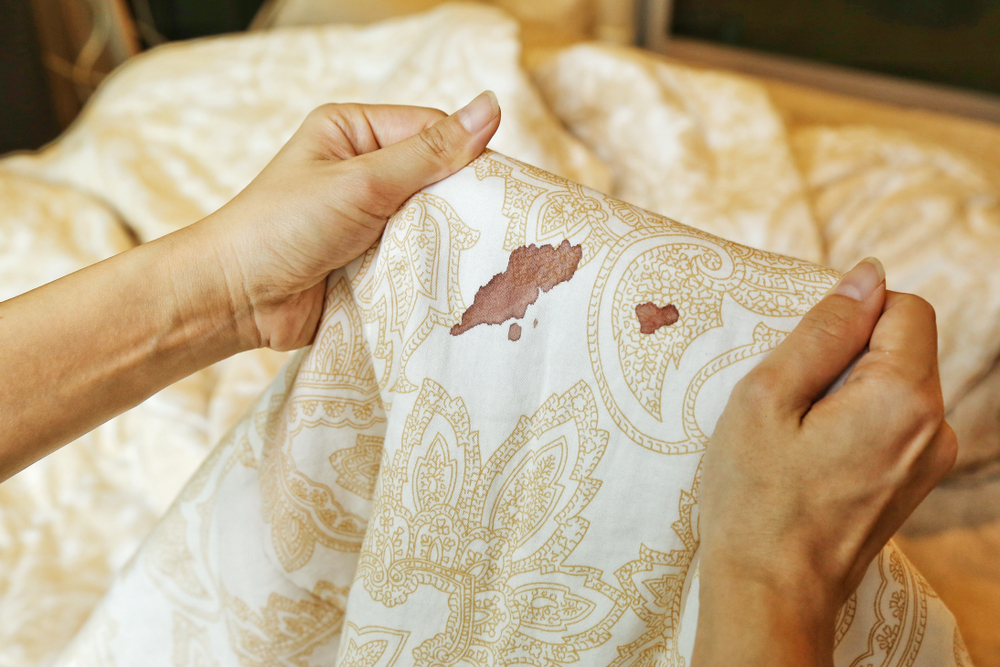Light spotting during menopause is quite common and generally not a cause for concern. As women transition into menopause, changes in hormone levels can disrupt their usual menstrual cycle, sometimes causing unexpected, light bleeding. In this post, we will share the reasons behind light spotting during this phase of life, highlight when it might indicate a more serious issue, and offer guidance on when to consult healthcare professionals.

Contents
Is Light Spotting During Menopause Normal?
Yes, light spotting or irregular vaginal bleeding is often normal during the menopausal transition. Here are some key points about spotting during menopause:
- It is caused by hormonal fluctuations and imbalances as the ovaries begin to produce less estrogen. The changing estrogen levels can make the endometrium (uterine lining) become thinner and shed irregularly.
- Spotting is especially common in the years leading up to menopause, which is the perimenopausal period. During this time, periods may become shorter, longer, heavier, or lighter, with spotting in between.
- Light bleeding or brown discharge around the time a woman would normally get her period is usually nothing to worry about if it happens occasionally in perimenopause.

- However, heavy vaginal bleeding, bleeding that occurs more often than monthly, or bleeding after intercourse should be evaluated by a doctor to rule out other potential causes like uterine polyps or endometrial atrophy.
- Once a woman reaches menopause (12 consecutive months with no periods), any vaginal bleeding is considered abnormal and should be promptly reported to a physician.
So, light spotting on occasion is normal during the menopausal transition as hormone levels fluctuate, but persistent or heavy bleeding warrants medical evaluation.
What Can Cause Bleeding During Menopause?
Bleeding during menopause, also called postmenopausal bleeding, can be caused by several factors. While it’s not normal (since menopause signifies the end of menstruation), it’s important to note that it doesn’t always indicate something serious. Here’s a breakdown of common causes:

-
Thinning of tissues: Low estrogen levels after menopause can cause the vaginal lining (atrophic vaginitis) or uterine lining (endometrial atrophy) to become thin and dry. This makes them more prone to irritation and bleeding, especially after intercourse.
-
Abnormal thickening: Sometimes, hormonal imbalances can lead to the uterine lining becoming too thick (endometrial hyperplasia). This thickened lining can shed irregularly, causing bleeding. In some cases, endometrial hyperplasia can have precancerous cells, so a doctor’s evaluation is crucial.
-
Growths in the uterus: Noncancerous growths like uterine fibroids or polyps can develop in the uterus and cause bleeding after menopause.
-
Hormone therapy: Bleeding can be a side effect of hormone replacement therapy (HRT) used to manage menopausal symptoms. It might occur when starting, stopping, or adjusting HRT dosages.
-
Cancer: Though less common, postmenopausal bleeding can be a symptom of endometrial or cervical cancer. Early diagnosis is essential, so consulting a doctor for any bleeding is important.
-
Other causes: Certain medications, sexually transmitted infections, or injuries to the reproductive system can also cause bleeding after menopause.
How Spotting During Menopause Is Treated?
The treatment for spotting during menopause depends entirely on the underlying cause identified by your doctor. Here’s a breakdown of some common treatments:

1. Hormonal Imbalances: If hormonal fluctuations are the culprit, your doctor might recommend hormone therapy (HT). This can come in various forms like pills, patches, creams, or vaginal rings. Estrogen therapy helps regulate the lining of the uterus and reduce spotting. Progestin, another hormone, is often combined with estrogen for added protection.
2. Endometrial Atrophy: For vaginal or endometrial thinning causing spotting, topical estrogen therapy might be the solution. This comes in creams, gels, or tablets inserted directly into the vagina to replenish lost estrogen and thicken the tissues, reducing irritation and bleeding.
3. Endometrial Hyperplasia: When a thickened uterine lining is the cause, options include:
- Progestin therapy: Progestin medication helps regulate the shedding of the thickened lining, potentially stopping the spotting.
- Dilation and curettage (D&C): This minimally invasive procedure involves scraping the uterine lining to remove excess tissue.
- Surgery: In some cases, depending on the severity, a hysterectomy (surgical removal of the uterus) might be recommended.
-
Fibroids or Polyps: If these growths are causing the spotting, surgical removal through procedures like hysteroscopy (using a thin lighted scope to remove them) might be necessary.
4. Other Causes: Treatment for other causes like infections or medication side effects would depend on the specific condition. Antibiotics address infections, while adjusting or discontinuing certain medications might be recommended.
Frequently Asked Questions
Why am I only spotting when I wipe?
Spotting can occur due to hormonal changes from birth control, pregnancy, or menopause, and is typically noticed as a few drops of blood on underwear or toilet paper. This usually is not a cause for concern.
What stage of perimenopause am I in?
You might be in early perimenopause if there is a persistent shift of seven days or more in your menstrual cycle’s length. On the other hand, a gap of 60 or more days between periods likely signifies that you’re in late perimenopause.
Why would a menopausal woman be spotting?
Postmenopausal spotting can happen due to various causes. The most prevalent ones include inflammation and thinning of the vaginal or womb lining due to lower estrogen levels, and non-cancerous growths like cervical or womb polyps.
What color is perimenopause spotting?
Perimenopause spotting often appears brown or dark. Texture variations may also occur, with the discharge being thin and watery, or thick and clumpy.
What is the average age for menopause?
Menopause typically occurs in your 40s or 50s. However, the average age for menopause in the United States is 51. Despite being a natural biological process, menopause can bring along physical and emotional symptoms that may impact your sleep, energy, and emotional health.
I am a medical student with experience and interest in Women’s health and well-being.